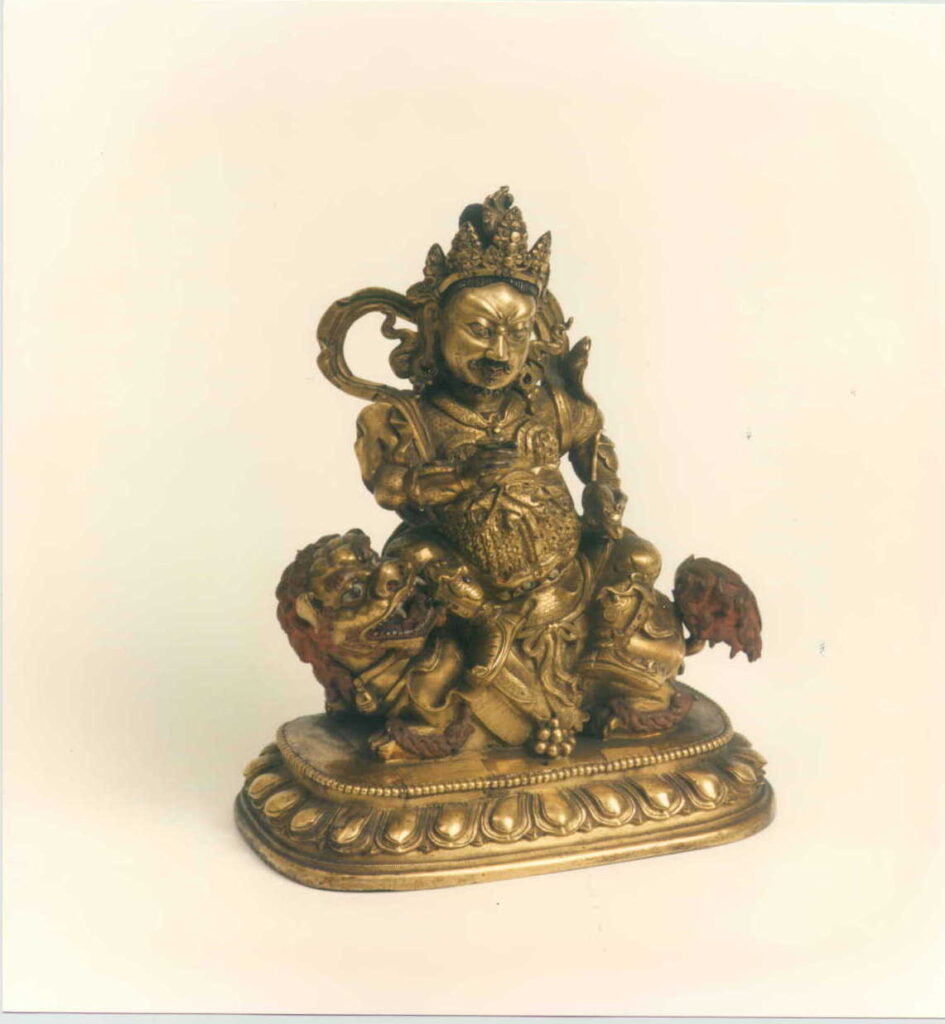VAISRAVANA
It is the representation of one of the Lokapalas or Dikapalas (Guardians of the cardinal points); specifically the northern one, Vaisvarana, who is assimilated to the Hindu divinity Kubera, and therefore to the god of wealth Jambhala. He appears under the form Mahapita Vaisravana “The great yellow Vaisravana”, the Lokapalas are painted at the entrances of the temples and constitute one of the most popular images of the “Lamaist” iconography. Of prominent belly and strong body, their origin is in the Hindu yakshas, and their grotesque aspect brings them closer to the terrifying divinities. They are represented as warriors with chain mail of the Chinese-Mongolian type, high boots, and an animal mask that protects the belly, and seated like princes in maharajalilasana. Vaisravana has as characteristic attributes the banner in his right hand (which does not appear in this image) and in his left hand the mongoose, conqueror of snakes and mythical guardian of treasures, from whose mouth come out jewels, which is why he is associated with wealth (in Buddhist doctrine the desire to distribute it to the poor), he is considered the protector of health, so he is very popular among Tibetans. His frowning expression distances him from the serenity of the peaceful divinities. He wears a shawl that surrounds the figure as a halo, and under his belly appears a head of the animal with whose skin he is wrapped. The movement of the figure is enhanced by details such as the sleeves that shoot upwards, which can be considered a Chinese characteristic; the same is true of the ribbons that hold the crown.She sits on a lion adorned with cloth, and this in turn rests on a base with a single row of lotus petals, on which appear in the center jewels grouped pyramidally. The back is meticulously worked, except for the central part of the base that appears smooth, which is characteristic of images of Chinese influence since the 17th century. Other features of Chinese influence are the shawl, the type of clothing, the footwear and the lion. The use of paint in the hair and on the inside of the crown indicates her worship in Tibet. The gold tone indicates a late date. R.C.M. / Extracted from: Isabel CERVERA FERNÁNDEZ: Fundación Rodríguez-Acosta. Asian Art Collection. Granada, 2002.Bibliography: COMAS, R.: El arte del Himalaya en las colecciones españolas: los bronces. Madrid, 1993, p. 398




